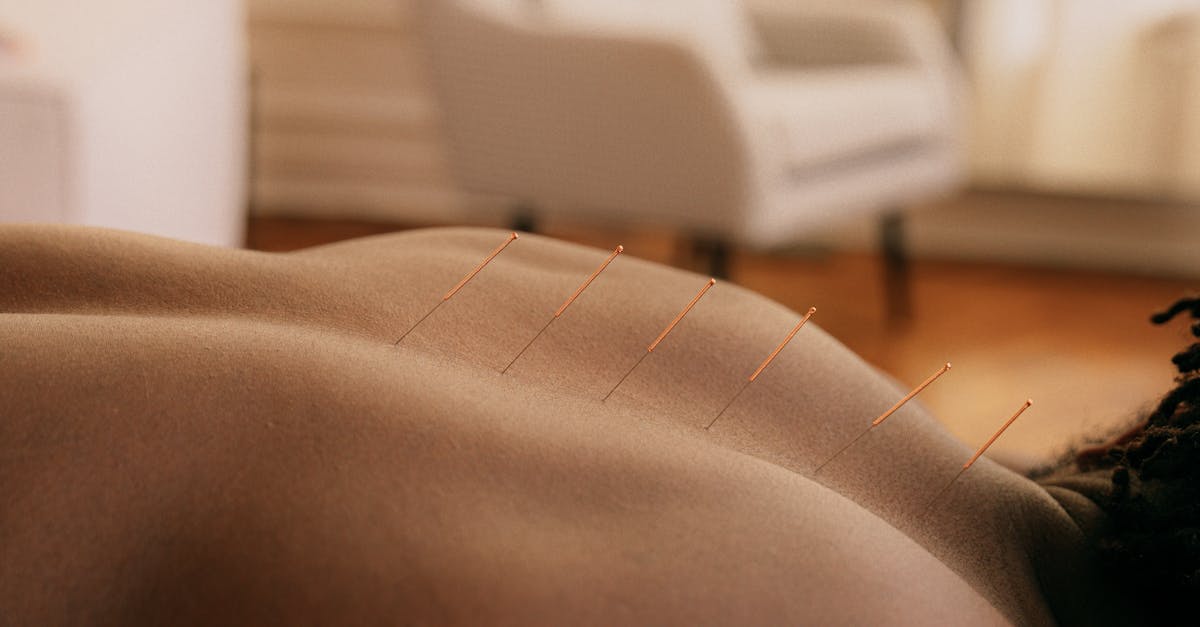
Understanding the Basics of Dry Needling in Brisbane
Table Of Contents
Finding Qualified Practitioners in Brisbane
When seeking a qualified practitioner for dry needling in Brisbane, it is essential to start by considering their training and experience. Look for professionals who hold relevant qualifications, particularly in physiotherapy or other allied health fields. These practitioners should have completed specialised courses in dry needling techniques and be familiar with the anatomy and physiology of the body. Checking for memberships in established professional organisations can also be an indicator of their commitment to maintaining standards in their practice.
Another important factor to consider is the practitioner’s reputation within the community. Reading online reviews and testimonials from previous clients can provide insight into their experience and effectiveness. Engaging in a preliminary consultation can help gauge their approach and ensure you feel comfortable with their style. It is crucial to discuss any concerns or questions you might have during this initial meeting, as clear communication plays a significant role in the effectiveness of the treatment.
Credentials to Look For
When seeking a qualified practitioner for dry needling, it is crucial to check their professional credentials. Look for certifications and training in dry needling specifically. Practitioners should ideally have a background in physical therapy, acupuncture, or related fields. Registered Health Practitioners typically undergo rigorous training and adhere to established standards, ensuring competence in their techniques.
Experience in dry needling is equally important. Some practitioners may have additional qualifications in musculoskeletal therapy or pain management. Inquire about their clinical experience, particularly in treating conditions similar to yours. A practitioner with a solid understanding of anatomy and pathology demonstrates a more comprehensive approach to treatment. This insight contributes to effective and safe treatment outcomes.
Preparing for Your Dry Needling Appointment
Before your appointment, it's important to wear comfortable clothing that allows easy access to the treatment area. Loose-fitting attire can help the practitioner perform the procedure with minimal disruption. Additionally, arrive hydrated to help facilitate the treatment. Drinking water before your session keeps your muscles supple and responsive.
Consider discussing your medical history and any chronic pain issues with your practitioner. This conversation helps them tailor the treatment to suit your individual needs. Bringing a list of any medications you're currently taking can also provide valuable context during the session. Remember, clear communication contributes significantly to achieving optimal results from dry needling.
Tips for First-Time Patients
Arriving early for your appointment can help reduce any stress or anxiety you may have. Take time to fill out any necessary forms and discuss your medical history with the practitioner. This information is crucial for ensuring your safety and obtaining the best results from the treatment. It also provides an opportunity for you to ask any initial questions and understand the procedure more clearly.
Being open about your discomfort levels during treatment is essential. Communicate with your practitioner about what you are feeling. This dialogue can assist them in adapting their techniques to suit your needs. Relaxation is key; deep breathing can help ease tension, which may enhance the effectiveness of the treatment.
Post-Treatment Care
After undergoing dry needling, it is essential to take care of your body to maximise the benefits of the treatment. Resting the affected area is crucial in the immediate hours following the session. This allows your muscles time to relax and recover from the stimulation they experienced during the procedure. Gentle stretching can also be beneficial, as it helps maintain flexibility and reduces the likelihood of stiffness.
Staying hydrated plays a significant role in your recovery. Drinking plenty of water aids in flushing out toxins that may have been released during the treatment. Avoiding strenuous activities or heavy lifting for a day or two can further promote healing. If any soreness or discomfort arises, applying a cold pack can help alleviate symptoms, providing relief without hindering the benefits achieved through dry needling.
Maximising Results After Dry Needling
After undergoing dry needling, engaging in gentle movements is essential for optimal recovery. Light stretching or walking can help stimulate blood flow and promote healing. Many practitioners recommend incorporating these activities into your routine to prevent stiffness and enhance mobility. Staying hydrated also plays a crucial role in flushing out toxins released during the treatment.
It's advisable to avoid intense physical activities in the first 24 to 48 hours post-treatment. Resting allows your body to adapt and recuperate. Maintaining communication with your practitioner can assist in tailoring follow-up care to suit your individual needs, ensuring you receive guidance on exercises or therapies that complement your dry needling experience.
FAQS
What is dry needling?
Dry needling is a therapeutic technique that involves the insertion of thin needles into specific trigger points in the muscle to relieve pain, improve mobility, and promote healing.
Is dry needling painful?
Most patients experience minimal discomfort during dry needling. The needles used are very thin, and while some may feel a slight prick or twitch in the muscle, it is generally not considered painful.
How many sessions of dry needling will I need?
The number of sessions required varies from person to person, depending on the condition being treated and individual response to therapy. Your practitioner will provide a tailored treatment plan after the initial assessment.
Can I undergo dry needling if I am pregnant?
It is important to consult with your healthcare provider before undergoing dry needling during pregnancy. Some practitioners may recommend avoiding the treatment during this time due to potential risks.
How should I care for myself after a dry needling session?
Post-treatment care typically involves staying hydrated, resting the treated area, avoiding strenuous activities for a day or two, and following any specific recommendations provided by your practitioner to maximise results.
Related Links
What to Expect During Your First Dry Needling SessionBenefits of Dry Needling for Muscle Pain Relief
Dry Needling Techniques and Their Effectiveness
Dry Needling vs. Cupping Therapy: Which is Better?
Side Effects and Aftercare Tips for Dry Needling
The Role of Dry Needling in Physiotherapy Rehabilitation